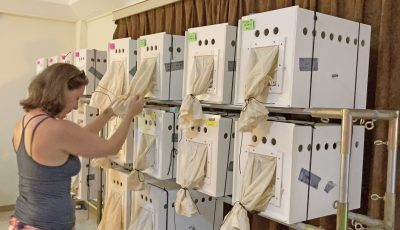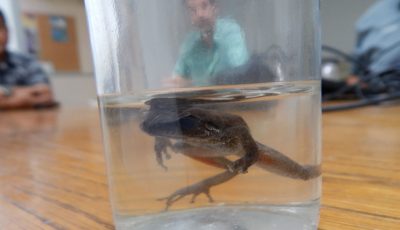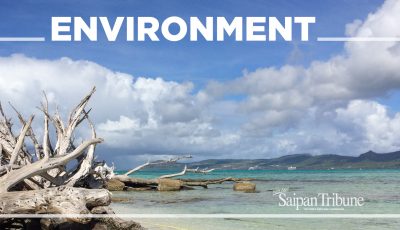Fish kill at Marine Beach
Hundreds of dead fish washed ashore on Marine Beach in Kagman last Wednesday.
The Division of Fish and Wildlife of the Department of Lands and Natural Resources said around 50 lbs of fish were killed in the area of highest concentration.
Among the fish that were found dead were types that could be eaten and some ornamental species.
Division director Manny Pangelinan said the extreme low tide that is being experienced for some days now caused the die-off.
“There’s no flow of water and some fish were caught up in those rocks and the lack of oxygen and the heat of the sun, we determined that that is the cause of that,” Pangelinan told Saipan Tribune.
“It’s the changing of the climate due to the excessive low tide,” he added.
Fisheries biologist Michael Tenorio noted that most of the fish that were killed were young ones.
“Most of the fish that died at Marine Beach are juveniles. They tend to use those areas to hide from other fish. Unfortunately, when they get stuck, they die out. Sometimes if the tide is low and it’s for an extended period of time, that’s when you get higher chances of fish dying because of being trapped,” he said.
Though excessively low, Tenorio said this kind of tide cycle is normal.
“It’s a normal process. Every year you get extreme tides,” Tenorio said, “It happens every couple times a year and it happens in areas where you know they will get trapped.”
Tenorio said beaches such as the Marine Beach and Tank Beach are where this type of fish kill often happens as they have fringing reefs and raised tables.
Pangelinan added that they weren’t able to find any unnatural toxins that may have caused the mass die-off.
“We didn’t find any illegal type of fishing or activities such as poisoning or those types of device,” Pangelinan said. “Right now we don’t suspect the use of poison or chlorine.”
He added that if they do see anything other than the lack of oxygen and the low tide that cause the death of the fish, they would send samples to Hawaii for testing.
Pangelinan said they continue to monitor spots that might also be impacted by the extreme low tide.
Although there is little they can do in fish kills caused by natural occurrences, DFW said it is still best for the public to inform the division.
“DFW is asking the public, that if they come across this type of incident, to immediately call us so that we can continue to check,” Pangelinan said.
“If people see those fish there…they can help physically remove the fish from that area and out to the water,” he added.
DFW said this could continue but not necessarily something that should cause alarm.
“The tide normalizes. It comes and goes and you have your extremes, like your wet season and your dry season. This is one of those extremes that will fade off and normalize again,” Tenorio said.



























